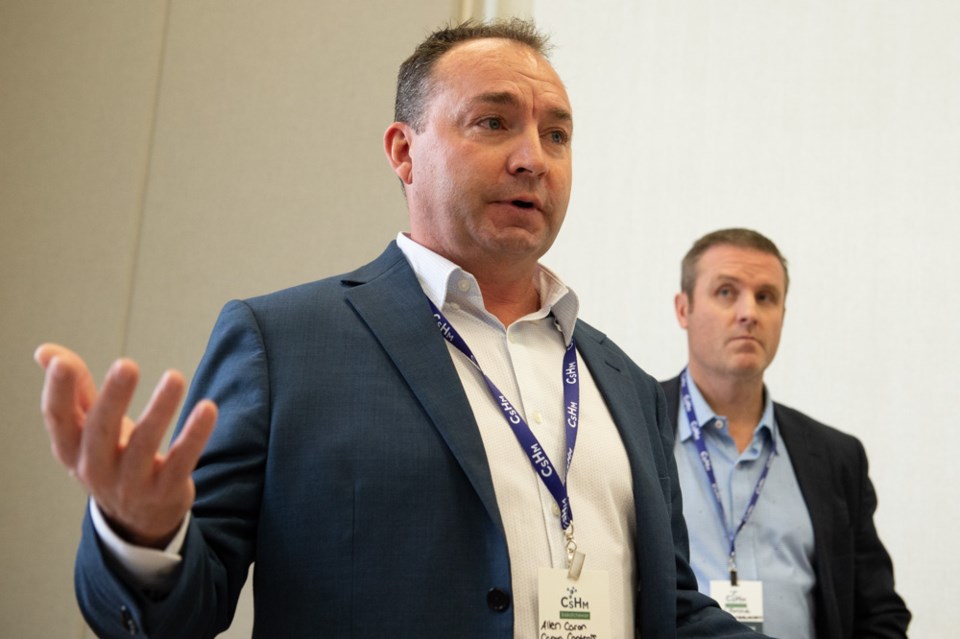Estevan – One of the novice-level presentations on at the Nov. 27 Canadian School of Hydrocarbon Measurement featured Allen Caron of Caron Measurement and Controls and John Forchuk of Sky Eye Measurement speaking about the “Fundamentals of Sampling.”
Forchuk said after the presentation, “What we’re trying to do is get some perspective on best practices and the challenges you’ll have in the crude oil industry, sampling of what we’re producing out of our wells and what we’re pumping through our pipelines. A lot of times it could be a reservoir validity, or how we’re reporting what we’re pulling out of the reservoir for production. But then, now we’ve refined it, it’s the exchange of products. So I’m the midstreamer, selling it to other parties. So we have to validate, through sampling, what we’re buying and selling, and come into agreement. That’s what the sampling is all about.”
He spoke of three different levels of testing – atmosphere, low pressure and high pressure. The first is about water cut, the second is about quality, and the third is about sales. “You can start off at the first tier. At the wellhead, you have to determine the oil, water and gas content, to report to the owner, which is the AER or Saskatchewan Econ. It’s a royalty statement. So I produced it, and I have to show you what I produced. I pay royalties to the government (or freeholder) on that, whoever owns it. I’m leasing it. So I need to validate your well testing and battery balancing. So it’s atmospheric, it’s a more coarse measurement.
“And then, as I move into the battery I’m doing the first level of refining. I separate oil, water and gas, and I send it in different directions. That sampling of just the oil stream, the clean oil stream, is at a low pressure, like maybe 15 PSI. I’m going to let any free vapour come off of it, because I need to get paid for that. It’s now been put in a pipe. If it gets heated, and I let it go away in an open container, I lost money,” he explained.
These are considerations when it comes to items like blending and vapour pressures. This also impacts shipping of crude-by-rail, and in particular, the total vapour pressure of the product shipped.
On high pressure, Forchuk said, “So we’re moving out of producing a barrel of oil. In a gas plant, I’m making a barrel of condensate, which is going to be under pressure, and you wouldn’t release it to atmosphere. It’s a higher pressure application. We need a different assembly of components to work at 1,800 PSI versus 15 PSI. And the other part, because it’s crude quality, and we’re working with larger pipes, you’re probably going to want to take a larger volume of that product, so I need a larger vessel.”
This could be up to 15, 16 litres for a sample, he said.



